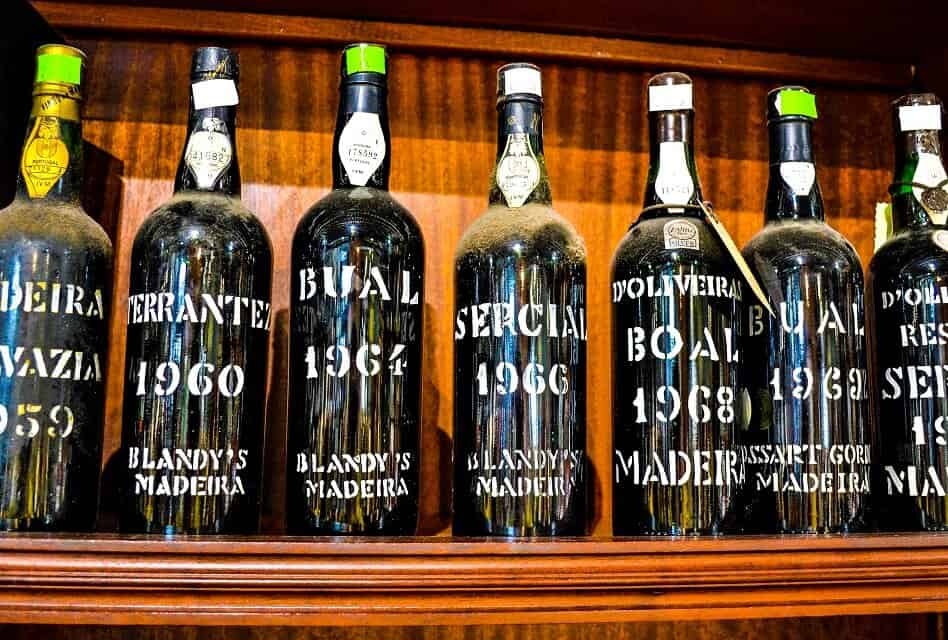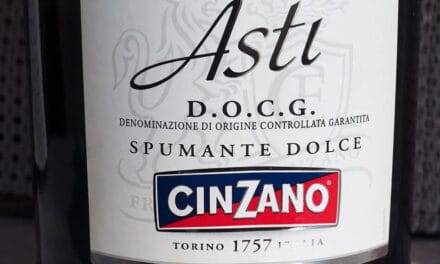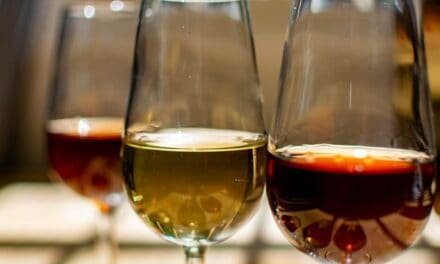Madeira wine is a fortified wine from the island of Madeira. It’s made from various white and red varietals and fortified by adding Brandy. It has an alcohol content of 18 to 22%. Depending on the exact varietal and the production process, it comes in many different quality tiers and can range from dry to very sweet.
There are various aspects that make this Portuguese wine special: its home region, its fascinating history, and its traditional winemaking techniques. Keep on reading to learn everything about it.
WHERE DOES MADEIRA WINE COME FROM?
The home of the Madeira wine is a small, rocky island in the Atlantic Ocean with the same name. Madeira is an autonomous region of Portugal, located about 440 miles (700 kilometers) west of the Moroccan coast. Its subtropical climate with high temperatures, extreme humidity, and much rain provides excellent conditions for the grapes grown all over the island.
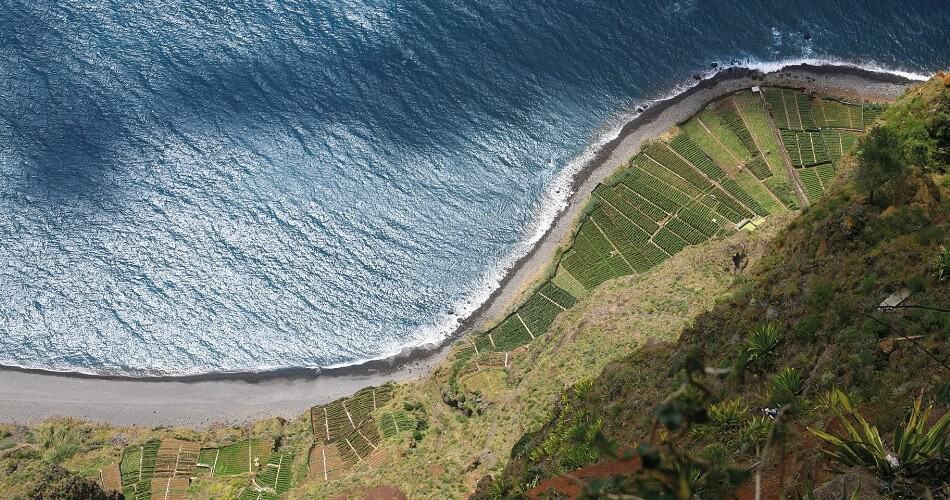
Bird’s Eye View of the Coast of Madeira Island
THE HISTORY OF MADEIRA WINES
Madeira wine has been produced since the 15th century and became internationally popular in the 1600s. The island of Madeira became an important supply station for ships that traveled from Europe to the Americas or the East Indies. And the colonies of the European empires in these regions had a high demand for wine.
During their journeys, the sailors made an interesting discovery: The Caribbean heat cooked the wine in the barrels. But instead of ruining the wine, it improved its flavor significantly. This effect, called “sea-aging”, gave Madeira wine its nickname “Vinho da Roda” (English: wine of the round trip).
Over the centuries, Madeira gained popularity, and many wine connoisseurs became lovers of this fortified wine. Some of them even made history: When George Washington and Thomas Jefferson toasted the U.S. Independence Day on July 4th, 1776, their glasses were filled with Madeira Wine.
Today, Madeira is a protected designation of origin. So only wines from the Portuguese island may be labeled as Madeira wine.
WHAT IS MADEIRA WINE MADE OF?
Winemakers use several varieties to produce Madeira wine. They grow them on small terraces at different altitudes in most parts of the island. Each of the grape types produces a specific type of Madeira wine.
Sercial
Sercial is a white varietal that is grown on the highest altitudes of the island. It has high acidity and ripens late in the year. So it is typically the last varietal that vintners harvest.
Verdelho
Verdelho is another white varietal. It’s grown primarily in the northern part of the island, where the climate is slightly cooler than in the southern region. Verdelho produces low yields, but in terms of crop area, it is the most-grown varietal on Madeira.
Boal
Boal (also: Bual) is a varietal that produces large white grapes that turn golden-yellow when ripe. They have a very sweet taste and need sunny and warm areas to grow. Thus, vintners cultivate them at low altitudes in the south.
Malmsey
Malmsey (also: Malvasia) is cultivated all around the island, usually on lower elevations towards the ocean. Its big white grapes ripen early and are very sweet in taste.
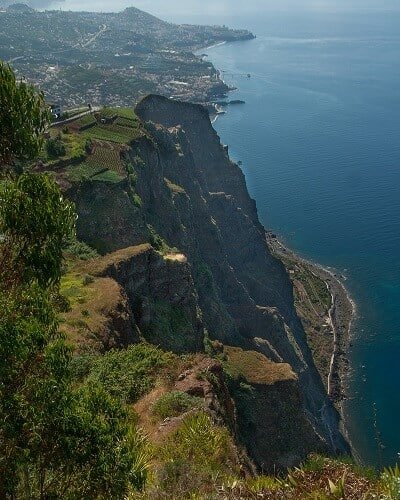
High-Altitude Vineyards on Madeira Island
Terrantez
The white grapes of Terrantez have thin skins, which make them prone to parasites and berry splitting. Their fragility caused many winemakers to replace them with more robust varietals in the past. Nowadays, you can find only small quantities of Terrantez on the island.
Bastardo
Bastardo is a red grape that is, just like Terrantez, very vulnerable to diseases. Besides, it only produces low yields, making it unprofitable for winegrowers. Thus, only very few vines with a small yearly output exist nowadays.
Tinta Negra
Another red grape for Madeira production is Tinta Negra. Its thick skins make it more robust than all the varietals mentioned before. However, it can adapt its characteristics quickly when growing at similar altitudes and climatic conditions. As it also produces high yields, it’s the dominating varietal: About 80% of the island’s vines are Tinta Negra grapes.
HOW MADEIRA IS MADE
The harvest of Madeira grapes takes place earlier than the harvest of grapes for table wine production. Thus, they typically have higher acidity. Due to the small sizes of the vineyards, mechanical harvesting is impossible, and winegrowers pick the grapes manually. The harvesting season is a highlight for locals as well as tourists. They celebrate it every year in August or September with the Madeira Wine Festival.
During the fermentation of the grapes, vintners add brandy to fortify the must. As this fortification stops the fermentation process, it determines the style of the wine: The earlier the vintner adds the brandy, the more sugar remains in the must. And the more sugar remains in the must, the sweeter will the resulting wine be. Vice versa, later fortification will create dryer wines.
The most remarkable part of producing Madeira wine is the aging process. The reason is that vintners do something that usually is a no-go in winemaking: They deliberately expose the wine to oxygen and heat and cause it to cook. This process that would usually ruin a table wine is essential to make great Madeira wine. It increases its sweetness, acidity, and alcohol content. Besides, it also preserves the wine.
This method is called “Maderization”, and replicates what happened to wines during their journeys from Europe to the colonies in the new world. Winemakers distinguish two different Maderization methods:
The Estufa Method
The Estufa Method is common for lower-quality wines. Winemakers store them in stainless steel tanks called “Estufas” (English: stoves) for about three months. During that time, pipes heat the tanks and the wine to about 120°F (50°C). After this process, the wine rests for several months before the winemaker bottles it.
This artificial heating method is a fast and cheap way to reproduce the natural aging process. But it also has its downsides: As some residual sugar in the wine caramelizes, it develops notable aromas of burnt sugar and sometimes even slightly bitter flavors.
The Canteiro Method
The Canteiro Method focuses on natural Maderization. The wine ages in wooden barrels placed on “Canteiros” (English: trestles). These casks remain in rooms or open-air areas where the sun heats them naturally. The sunlight initiates the same process as the artificial heating, but at a much slower pace. Because of this slower pace, no sugar gets burnt, and no unpleasant flavors occur. The result is a fresher, fruitier wine with fewer caramel aromas that connoisseurs consider very fine. The best Canteiro wines stay in casks for 20 to 100 years. Before filling them into bottles, the winemakers fortify them again.
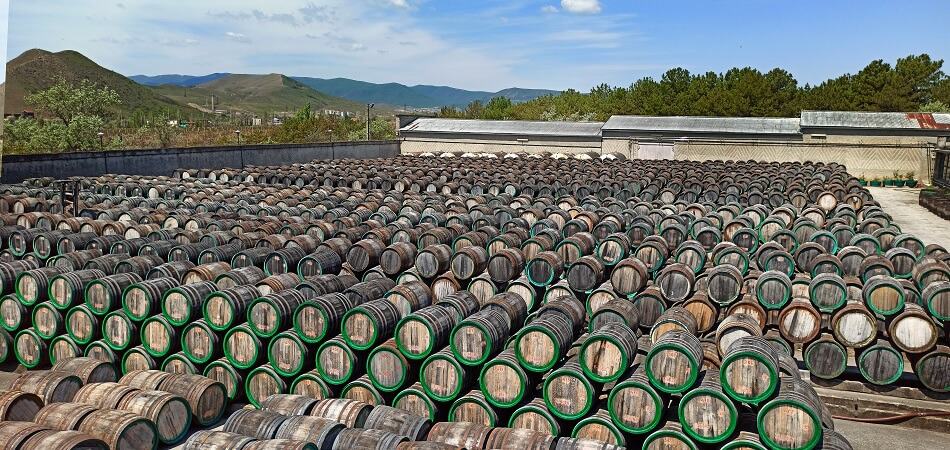
Outdoor Storage for Wine Maderization
WHAT DOES MADEIRA WINE TASTE LIKE?
In general, Madeira wines are sweet and strong in alcohol with crisp acidity. But depending on the varietal and the aging method, you can expect very diverse experiences.
Sercial creates the driest type of Madeira wine (Portuguese: seco) that is light in color. Because of its high acidity that offsets its slight sweetness, it tastes crisp and fresh. Sercial Madeira comes with citrus and herbaceous aromas.
Verdelho produces a medium-dry (Portuguese: meio-seco) wine. It’s also high in acidity but fuller-bodied than Sercial. It develops smoky and spicy aromas and notes of honey, caramel, nuts, and peaches.
Boal wine is an amber-colored, medium-sweet (Portuguese: meio-doce) version of Madeira. It’s rich and highly aromatic, with flavors of caramel, coffee, raisin, almonds, and roasted nuts. Its sharp acidity creates a long, tangy finish.
Malmsey grapes produce the sweetest Madeira wines (Portuguese: doce). They’re dark in color and develop aromas of caramel, vanilla, coffee, and chocolate, but also fruity and nutty notes.
Terrantez wines have a great balance of sweetness and acidity. Typically, they’re a bit drier than Boal wines but slightly sweeter than Verdelho. Because of their wide and complex array of flavors, many wine lovers consider Terrantez to be the best Madeira wine.
Madeira wines from Bastardo grapes are not as complex as Terrantez wines, but are still rich and well-balanced. These mahogany-colored wines are very hard to find and extremely expensive.
As mentioned before, Tinta Negra is a versatile varietal. It produces sweet wines as well as dryer styles. Especially older vintages are very good. But in general, Tinta Negra lacks the complexity of Boal, Malmsey, or Terrantez wines.
HOW TO SERVE MADEIRA WINE
Opening a bottle of Madeira can be tricky, especially if it’s very old. If the cork is waxed, carefully break it and peel it off like you would peel an egg. Alternatively, use a knife and “shave” the wax off. Be careful with the cork, as it can be porous when old and dry.
What Is the Right Glass for Madeira Wine?
As Madeira is strong in alcohol, you should serve it in smaller portions than table wine. A Madeira glass measures 6 3/8 inches (16.2 cm) in height and has a capacity of 8 3/4 ounces (260 ml). A Port wine glass has a comparable volume and is a good option, too. If you have neither, use another dessert wine glass or a small white wine glass.
What Is the Right Serving Temperature for Madeira Wine?
Serve Madeira at a temperature of about 55 to 64°F (13-18°C). For dry styles, aim for temperatures at the lower end of this range. Sweet styles are better when you serve them warmer. And the older a vintage wine is, the warmer you can serve it.
Should You Decant Madeira Wine?
You should definitely decant Madeira so it can release its full aroma. For very old bottles, decanting is a must-do because they’re prone to “bottle sickness”. Bottle sickness is a condition where fruity flavors get muted or disjointed during the aging process. Luckily, it’s curable. Simply expose a wine that suffers from it to air for 24 to 28 hours. It will open up and release its aromas, so the bottle sickness disappears.
If necessary, run the wine through a coffee filter when pouring it into the decanter to get cork pieces and sediments out of it.
HOW TO STORE MADEIRA WINE
Always store Madeira wine in an upright position. A cool cellar is great, but you can also store it at room temperature. Consider packing the bottle in a plastic bag to keep the label in top condition and prevent the cork from drying out when storing it very long.
Can Madeira Wine Be Aged?
All Madeira wines of average or better quality have aging potential. You can store them for decades, and they will get better and better. If you cellar a bottle of high-quality Madeira today, your great-grandchildren will enjoy a top-class wine when they get old.
Can Madeira Wine Go Bad?
Even when stored for decades, Madeira will hardly go bad. You must take care of it properly, though. As the cork deteriorates faster than the wine, it can dry out and impact the flavor. So every 40 years, you should replace it.
Also, make sure that a bottle of Madeira doesn’t contain too much gas. Over the years, the wine slowly reduces. That’s a natural process and no problem at all. Actually, it is a good thing, because the delicate flavors concentrate in the remaining wine. However, you must ensure that the bottle content does not drop beyond the lower end of the neck. If you own several bottles of the same vintage, use one to refill the others. Alternatively, add sterile glass balls to the bottle, so the liquid level remains constant.
How Long Does Madeira Wine Last When Open?
Even when opened, Madeira wine will remain enjoyable for weeks, probably even months. Store Sercial wines in the fridge. Other types of Madeira will keep at room temperature, too.
WHICH FOOD GOES WITH MADEIRA WINE?
In general, Madeira is a good match for many spicy dishes, stews, desserts, and many kinds of cheese. Let’s find out the best pairings for the single styles:
- Sercial is often served as an aperitif with the starting course. It goes well with light fish, including sushi, salads, and vegetable dishes. And it’s also a great companion for dishes with onion, garlic, or olives. Besides, it matches light cheeses and green apples.
- Verdelho is a very flexible wine in terms of food pairing. Try it with soups, smoked seafood, curry, or poultry like chicken or duck. Cottage cheese works fine as well.
- Boal is great with spicy dishes that contain cinnamon, cloves, or fennel. Rich cheeses are delicious pairings, and so are desserts based on dark chocolate, caramel, nuts, or stewed fruits.
- Malmsey should be paired with the spiciest meat dishes and desserts, or with very sweet desserts. Great flavors to accompany Malmsey are nuts, honey, strawberries, chocolate, and blue cheese.
- Terrantez and old Malmsey wines are best to enjoy on their own. Sip them like a Cognac, but never drink them on ice.
TYPES OF MADEIRA WINES
Looking for Madeira wine can quickly become confusing because there are many different types and styles. To read and understand Madeira bottle labels, here are some crucial details:
Single varietal Madeira contains wine from only one varietal. They are usually of higher quality and better taste than blended wines. Single-varietal wines have the varietal’s name on their bottle labels.
When the bottle does not carry a varietal name, it is a blended Madeira wine, composed of two or more varietals or multiple vintages. Winemakers use different labels that indicate the blend’s age and quality:
- Finest Madeira is a 3-year-old blended wine from Tinta Negra grapes. Its name is confusing because these wines are definitely not the finest of Madeira wines. However, they are typically affordable.
- Rainwater Madeira also consists primarily of Tinta Negra and has to age at least three years before making it to the stores. It is fruity in taste and of decent quality.
- Reserve is a label for Madeira wines aged between 5 and 10 years.
- Special Reserve wines stay in barrels for 10 to 15 years. They are high-quality wines.
- Extra Reserve indicates that a wine was aged 15 to 20 years.
- 20-Year-Old Madeira is a blend of wines from different years. A panel of experts has to confirm that the quality and taste of this wine match the age stated on the label. Similarly, you can find 30-Year-Old and 40-Year-Old Madeira.
Extra Rare Wines
Besides single-varietal and blended wines, you can also find some rare Madeira wines of very high quality:
- Colheita Madeira is a wine from a single vintage. It ages for at least five years and has great potential to get better in your cellar.
- Frasqueira Madeira is a single-vintage wine as well, but it has to age for at least 20 years in a cask. This label stands for extraordinary quality.
SHOPPING MADEIRA WINES
Madeira is a protected label within the European Union. And typically, you can rely on getting an original from Portugal when finding it in the United States, too. Nevertheless, it is reasonable to double-check a bottle for its origin. Often, you can find a statement like “Product of Madeira Island” or “Product of Portugal” (Portuguese: Produto de Portugal).
Madeira Wine for Cooking
Madeira is not only a great drink but also a delicious ingredient for cooking. It’s perfect for deglazing pan dishes, reducing sauces, or refining salad dressings.
When picking a wine for cooking, go for blended styles. Especially Rainwater is a good choice as it’s affordable but of decent quality.
Be aware that the longer a wine aged, the stronger its nutty aromas will be. In any case, use only small portions to avoid overpowering other flavors of your meal.
How Much Does Madeira Wine Cost?
Basic Sercial wines and blends start at 10 dollars per bottle of 750 ml. When made from rare varietals or aged very long, bottles get much more expensive. The reasons are the remote location of the island of Madeira, the limited space for agriculture, and the long aging process. For a decent 10-year-old Malmsey, you should expect to pay between 40 and 60 dollars. A Terrantez from the 1970s can cost around 600 dollars. And Bottles older than 100 years cost several thousands of dollars.
It’s worth mentioning that the best place to buy Madeira is the island itself. Besides lower prices (you can save 30 to 40% of what you pay in the United States), you can also do winery tours and try different wines, often free of charge.
Try these entry-level wines to get an idea of the wines’ quality:
Cossart Gordon Rainwater Madeira
- type: red, fortified, medium-dry
- origin: Portugal, Madeira
- varietal: Tinta Negra Mole
- alcohol: 18.0%
Blandy's 5 Year Old Malmsey Madeira
- type: white, fortified, sweet
- origin: Portugal, Madeira
- varietal: Malmsey
- alcohol: 19.0%
Blandy's 5 Year Old Bual Madeira
- type: white, fortified, sweet
- origin: Portugal, Madeira
- varietal: Bual
- alcohol: 19.0%
If you want to get the full taste of Madeira, try one of these high-quality wines:
Blandy's 15 Year Old Malmsey Madeira
- type: white, fortified, sweet
- origin: Portugal, Madeira
- varietal: Malmsey
- alcohol: 19.0%
Blandy's Vintage Verdelho Madeira 1976
- type: white, fortified, medium-dry
- origin: Portugal, Madeira
- varietal: Malmsey
- alcohol: 21.0%
Broadbent 10 Year Sercial Madeira
- type: white, fortified, dry
- origin: Portugal, Madeira
- varietal: Sercial
- alcohol: 19.0%
FINAL WORDS
Madeira wines are not only rich and complex in flavor, but also very diverse. The several varietals and production processes create delicious experiences for lovers of dry wines as well as sweet wine fans. If you have the chance to try one of the rare fortified wines coming from the Portuguese Island, you should take it – you will be excited.

